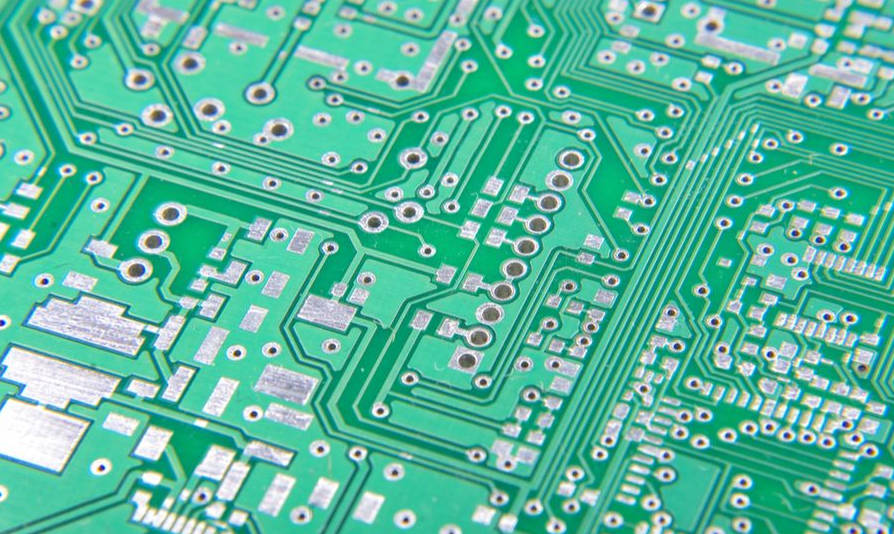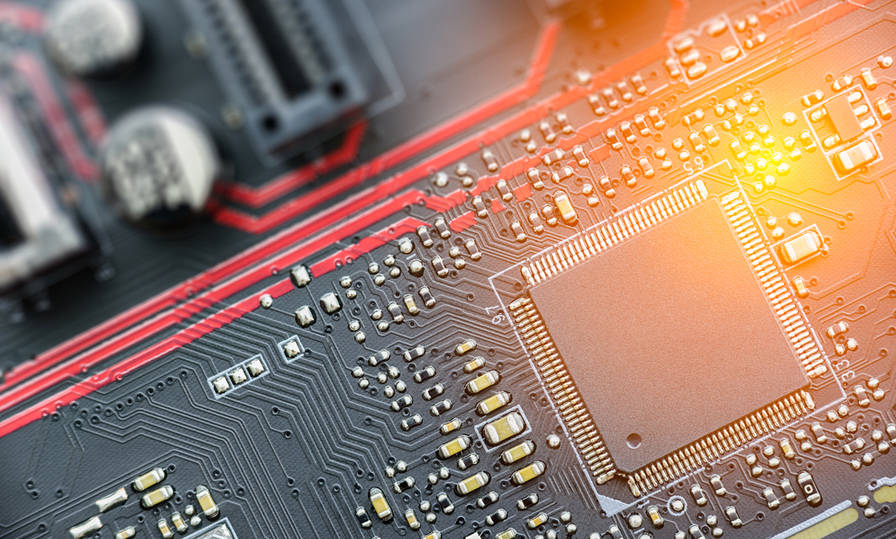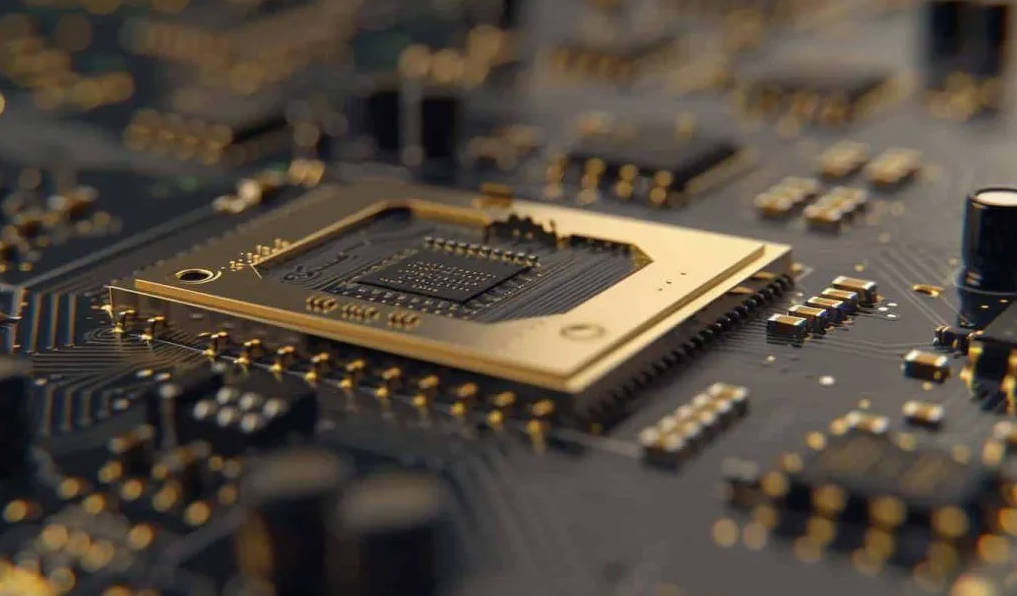While the industry-standard FR-4 material offers a proven balance of cost and performance, its environmental impact is driving a critical shift towards sustainable alternatives. Eco-friendly PCB materials like the water-soluble Soluboard®, classic paper-based substrates, and other emerging biopolymers offer innovative solutions to the growing e-waste problem by focusing on biodegradability, recyclability, and reduced toxicity, challenging designers to rethink material selection for a greener future in electronics.
For decades, the electronics industry has been built upon a silent workhorse: the FR-4 printed circuit board (PCB). This glass-reinforced epoxy laminate is ubiquitous, found in everything from your smartphone to industrial control systems. Its popularity stems from a robust combination of mechanical strength, excellent electrical insulation, and flame-retardant properties, all at an accessible price point. However, as global awareness of electronic waste (e-waste) intensifies, the very characteristics that make FR-4 so durable also make it an environmental liability. The combination of fiberglass, epoxy resins, and often brominated flame retardants creates a composite material that is incredibly difficult to recycle and non-biodegradable. This article delves into the world of PCB substrates, comparing the reigning champion, FR-4, with the rising tide of eco-friendly contenders that promise a more sustainable lifecycle for the electronic devices that power our world.

Table of Contents
- Understanding the Incumbent: What Exactly is FR-4?
- The Rise of Sustainable PCBs: A New Era in Electronics
- Spotlight on Eco-Friendly PCB Materials: The Contenders
- A Head-to-Head Comparison: FR-4 vs. Eco-Friendly Alternatives
- How to Choose the Right PCB Material for Your Project?
- The Future is Green: What’s Next for Sustainable PCB Technology?
- Conclusion: Making the Sustainable Switch
Understanding the Incumbent: What Exactly is FR-4?
Before exploring the alternatives, it’s crucial to understand why FR-4 has dominated the market for so long. The name itself is a designation from the NEMA (National Electrical Manufacturers Association) grading system, where “FR” stands for Flame Retardant, and the “4” signifies a woven glass-reinforced epoxy laminate. Its reliability and well-understood properties make it the default choice for countless engineers.
The Composition of FR-4: Fiberglass and Epoxy Explained
At its core, FR-4 is a composite material. It consists of thin layers of woven fiberglass cloth that are impregnated with a binding agent, typically an epoxy resin. This mixture is then laminated together with copper foil under intense heat and pressure. The epoxy resin provides rigid structure and excellent adhesion, while the woven fiberglass provides immense mechanical strength and dimensional stability. To achieve its flame-retardant properties, brominated compounds, particularly Tetrabromobisphenol A (TBBPA), are often incorporated into the epoxy resin, a point of significant environmental concern.
Why is FR-4 So Popular? The Pros
FR-4’s reign is no accident. It offers a compelling list of advantages that have made it the industry standard for a wide range of applications:
- Cost-Effectiveness: Mass production and a mature supply chain make FR-4 one of the most affordable PCB substrates available.
- High Mechanical Strength: The fiberglass weave provides exceptional rigidity and resistance to bending and flexing, protecting components.
- Good Electrical Insulation: It has a high dielectric strength, preventing electrical shorts between layers.
- Dimensional Stability: FR-4 exhibits minimal expansion and contraction with temperature changes, which is critical for maintaining the integrity of traces and component placement.
- High Glass Transition Temperature (Tg): Standard FR-4 has a Tg of around 130-140°C, with high-Tg versions reaching 180°C. This is the temperature at which the material shifts from a rigid state to a softer, more rubbery state, making it suitable for lead-free soldering processes.
The Environmental Downside of FR-4: The Cons
The strengths of FR-4 are inextricably linked to its environmental weaknesses. Its durability is a double-edged sword when it comes to disposal.
- Non-Biodegradable: The cross-linked epoxy and fiberglass composite does not break down in landfills, contributing directly to the accumulation of e-waste.
- Recycling Difficulty: Separating the intertwined copper, fiberglass, and epoxy resin is an energy-intensive and often economically unviable process. Most recycling methods involve shredding and incineration to recover precious metals, which releases harmful substances.
- Toxic Components: The use of brominated flame retardants can lead to the formation of toxic dioxins and furans when burned at uncontrolled temperatures, a common scenario in informal e-waste processing.
The Rise of Sustainable PCBs: A New Era in Electronics
The push for sustainable electronics is fueled by consumer demand, corporate responsibility initiatives, and tightening government regulations like the European Union’s Restriction of Hazardous Substances (RoHS) directive. This has created a fertile ground for innovation in PCB materials. The goal is no longer just performance and cost, but also to design for the entire product lifecycle, from sourcing raw materials to responsible end-of-life management. This “cradle-to-grave” or even “cradle-to-cradle” approach is where eco-friendly materials truly shine, offering pathways to reduce landfill waste and mitigate environmental toxicity.
Spotlight on Eco-Friendly PCB Materials: The Contenders
A new class of materials is emerging to challenge FR-4’s dominance, each with a unique set of properties and ideal use cases. These materials prioritize biodegradability, recyclability, or the use of renewable resources.
Soluboard®: The Water-Soluble Game-Changer
Perhaps one of the most innovative recent developments is Soluboard®, a PCB substrate developed by Jiva Materials. It is a fully biodegradable, non-toxic material designed to tackle e-waste head-on. Instead of fiberglass and epoxy, Soluboard® is constructed from natural flax fibers bound together by a water-soluble polymer. The magic happens at the end of the product’s life: when immersed in hot water (around 90°C), the polymer binder dissolves, causing the composite to delaminate. This process allows the natural fibers to be composted and, more importantly, releases the electronic components intact for easy harvesting and recycling. This approach could revolutionize component recovery, which is traditionally the most challenging part of PCB recycling.
- Pros: Fully biodegradable laminate, enables near 90% component recovery, non-toxic, lower carbon footprint than FR-4.
- Cons: Lower thermal performance (Tg ~125°C), currently best suited for 2-layer boards, may not be suitable for high-humidity or high-temperature operating environments.
- Best For: Short-lifecycle electronics, prototypes, educational kits, and IoT devices where end-of-life reclamation is a primary design goal.
Paper-Based Phenolic Substrates (FR-1, FR-2): The Cost-Effective Classic
Long before FR-4 became the standard, paper-based PCBs were common. Materials like FR-1, FR-2, and XPC use paper (cellulose) impregnated with a phenolic resin. While not “biodegradable” in the modern sense like Soluboard®, they represent a step away from fiberglass. They are significantly cheaper than FR-4 but come with performance trade-offs. They are typically used only for single-sided boards due to their poor dimensional stability and high moisture absorption, which can alter their electrical properties.
- Pros: Very low cost, easy to punch and machine at room temperature.
- Cons: Poor moisture resistance, low mechanical strength, not suitable for plated through-holes (PTH) or multi-layer designs, lower thermal performance.
- Best For: Extremely low-cost, high-volume consumer electronics like toys, calculators, and simple power supplies where performance demands are minimal.
Beyond the Basics: What Other Green Materials Are Emerging?
The search for the perfect green PCB material is ongoing, with research exploring a variety of intriguing options:
- Wood-Based Substrates: Researchers are experimenting with lignin, a natural polymer found in wood, to create fully biodegradable electronic substrates. These materials show promise but are still largely in the R&D phase.
- Bioplastics (PLA): Polylactic Acid (PLA), a common material in 3D printing derived from corn starch, is being explored for flexible and rigid PCBs. It is compostable under industrial conditions but has a very low Tg, limiting its application.
- Ceramic Substrates: Materials like Alumina (Al2O3) and Aluminum Nitride (AlN) are non-toxic and extremely stable. While their manufacturing is energy-intensive, they offer superb thermal performance and are used in high-power and high-frequency applications. They are more “green” in terms of non-toxicity and longevity rather than biodegradability.
A Head-to-Head Comparison: FR-4 vs. Eco-Friendly Alternatives
Choosing a material requires a clear understanding of the trade-offs. The following table provides a direct comparison of the key properties of these materials.
| Property | FR-4 | Soluboard® | Paper Phenolic (FR-2) |
|---|---|---|---|
| Core Material | Woven Fiberglass, Epoxy Resin | Natural Flax Fibers, Soluble Polymer | Paper (Cellulose), Phenolic Resin |
| Glass Transition Temp (Tg) | ~130-180°C | ~125°C | ~105°C |
| Dielectric Constant (Dk) @ 1GHz | ~4.2 – 4.8 | ~3.6 | ~4.5 – 5.0 |
| Moisture Absorption | Low (~0.15%) | High (by design) | High (~0.65%) |
| Multi-layer Capability | Excellent (up to 30+ layers) | Limited (currently 2 layers) | No (single-sided only) |
| End-of-Life | Landfill / Incineration | Biodegradable (dissolves in water) | Landfill |
| Relative Cost | Low | Moderate (competitive) | Very Low |
How to Choose the Right PCB Material for Your Project?
The decision is no longer a simple default to FR-4. A responsible engineer must now consider the application’s entire context. Which sustainable material is best? The answer depends on a thoughtful analysis of your project’s specific needs.
Assessing Product Lifespan and End-of-Life
This is the most critical new consideration. For a product designed to last 10-15 years, like an industrial controller or network server, the durability and proven reliability of FR-4 may still be the most logical choice. However, for a promotional gadget with a lifespan of six months, or a disposable sensor for agriculture, using a material that will persist in a landfill for centuries is irresponsible. In these cases, a material like Soluboard® is not just an option; it is a superior design choice that aligns the material’s lifespan with the product’s.
Matching Material Properties to Application Demands
Your circuit’s technical requirements remain paramount. Will the board be exposed to high temperatures or humidity? Does it require complex, multi-layer routing with fine-pitch components? Is it a high-frequency RF application where dielectric constant is critical? High-performance applications will still lean on high-Tg FR-4 or even more exotic materials like Rogers or ceramics. Low-cost, single-sided consumer electronics can easily utilize paper phenolic substrates. The emerging eco-friendly materials currently fit best in the middle ground: products with moderate complexity that do not operate in extreme environments.
Navigating the Supply Chain and Availability
Practicality cannot be ignored. FR-4 is available from virtually any PCB manufacturer in the world. Newer materials like Soluboard® have a growing but more limited network of fabricators. When planning your project, it’s essential to engage with your contract manufacturer early to ensure they can source and process your chosen material. As demand for sustainable options grows, availability will undoubtedly improve, but it remains a key logistical checkpoint for now.
The Future is Green: What’s Next for Sustainable PCB Technology?
The development of eco-friendly PCB materials is just beginning. The future likely involves a multi-pronged approach. We can expect to see advancements in biopolymers that offer higher thermal performance, expanding their range of applications. Furthermore, the principles of the circular economy will become more integrated into electronics design. This means not only using biodegradable materials but also designing products for easy disassembly, repair, and component reuse. Innovations like Soluboard® are a massive step in this direction, shifting the focus from just material composition to enabling a truly circular lifecycle.
Conclusion: Making the Sustainable Switch
FR-4 is not going to disappear overnight. Its blend of performance, cost, and a deeply entrenched manufacturing ecosystem ensures its place in electronics for the foreseeable future. However, the paradigm is shifting. The question for designers is no longer “Why shouldn’t I use FR-4?” but rather, “Does this specific application truly require FR-4, or is there a more responsible choice?” Materials like Soluboard® and even the humble paper-phenolic board demonstrate that viable, sustainable alternatives exist. By consciously evaluating the environmental impact alongside technical and financial requirements, engineers and designers can lead the charge in building an electronics industry that is not only powerful and innovative but also sustainable and responsible.
FR4 vs Eco-Friendly PCB, Sustainable PCB materials, Soluboard PCB, FR-4 alternatives, biodegradable PCB substrate, paper-based PCB material, environmental impact of FR4, how to choose a PCB material, green PCB substrates, recyclable PCB boards, FR-4 pros and cons, Soluboard vs FR4



